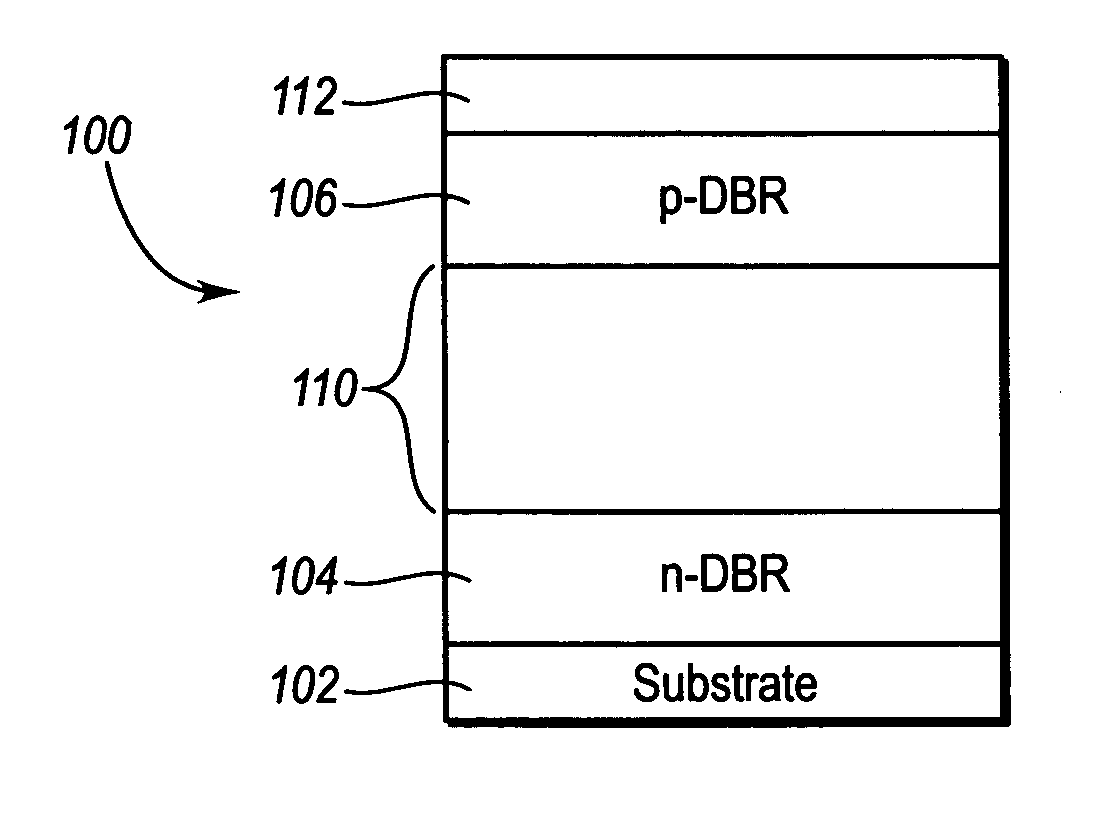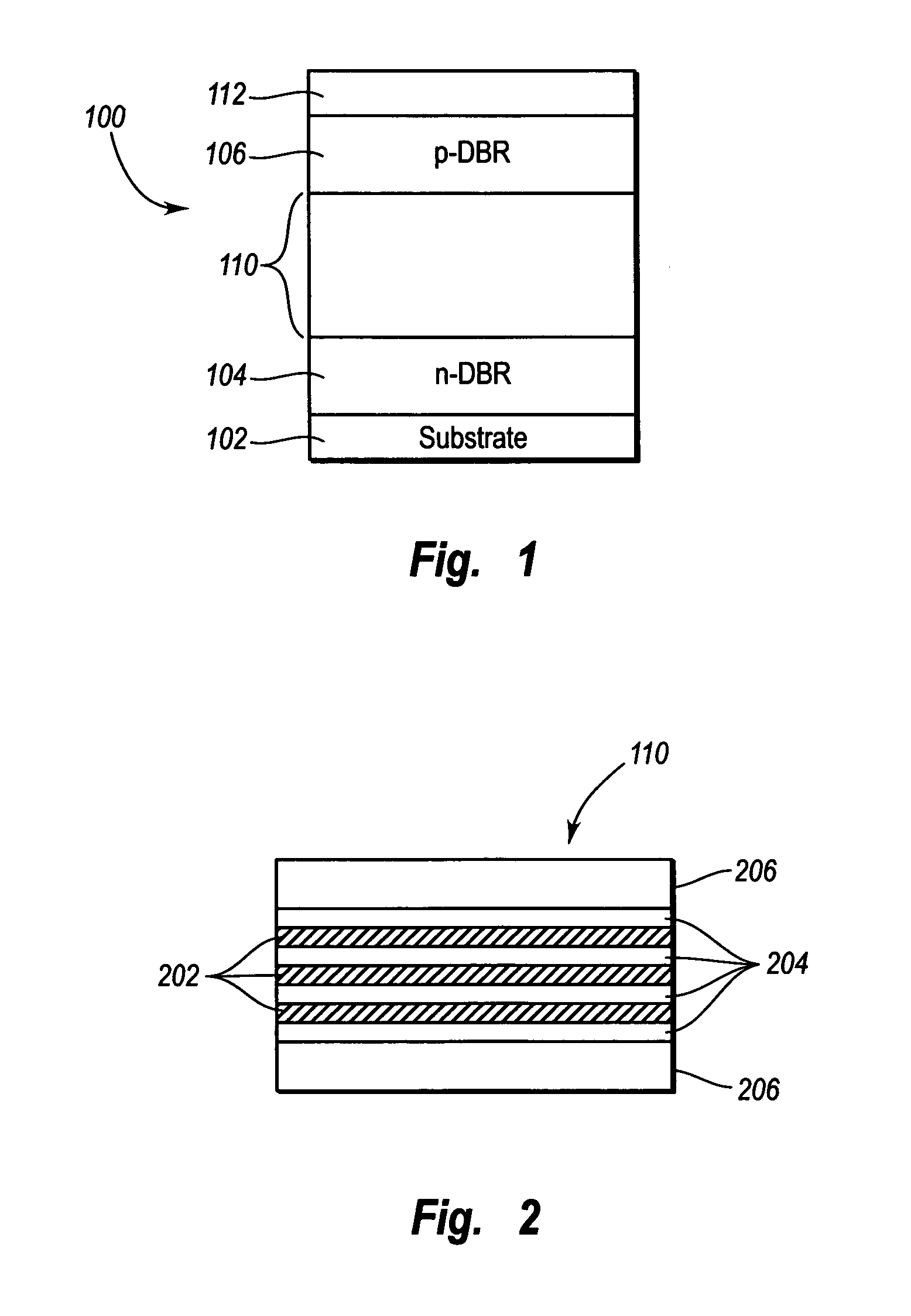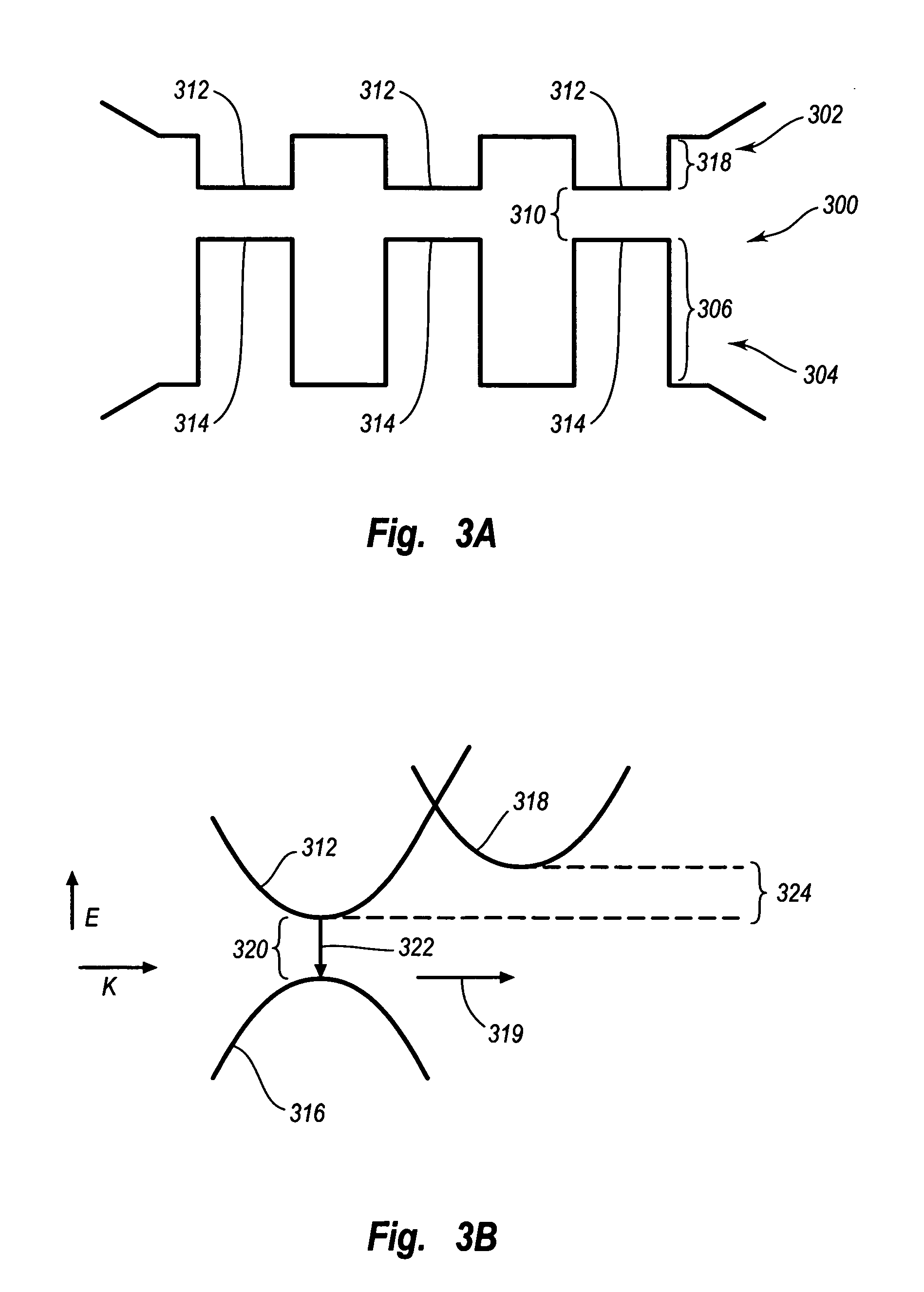Band offset in AlInGaP based light emitters to improve temperature performance
a technology of alingap and light emitters, which is applied in the direction of semiconductor lasers, lasers, solid-state devices, etc., can solve the problems of degrading the high-temperature performance of alingap-based devices, and achieve the effects of increasing the concentration of aluminum, and decreasing the concentration of indium
- Summary
- Abstract
- Description
- Claims
- Application Information
AI Technical Summary
Benefits of technology
Problems solved by technology
Method used
Image
Examples
Embodiment Construction
[0021] The visible spectrum includes wavelengths of approximately 400 nm to 750 nm. At these wavelengths, the system materials used to make light emitting devices such as vertical cavity surface emitting lasers (VCSELs) include AlInGaP based devices, AlGaAs based devices, InGaP based devices, and other system materials known to one of skill in the art. AlInGaP is often selected for these types of light emitting devices including those that emit in the red region of the visible spectrum (690 to 630 nm, for example).
[0022] The performance of an AlInGaP based device is often related to the band offsets and carrier confinement. For example, AlInGaP devices tend to have a direct bandgap that is greater than the direct bandgap of AlGaAs devices, but the conduction band offset is insufficient in AlInGaP devices. The effect of the low conduction band offset in AlInGaP devices has an impact on the wavelengths that can be emitted and further has an impact on the performance of the device, pa...
PUM
 Login to View More
Login to View More Abstract
Description
Claims
Application Information
 Login to View More
Login to View More - R&D
- Intellectual Property
- Life Sciences
- Materials
- Tech Scout
- Unparalleled Data Quality
- Higher Quality Content
- 60% Fewer Hallucinations
Browse by: Latest US Patents, China's latest patents, Technical Efficacy Thesaurus, Application Domain, Technology Topic, Popular Technical Reports.
© 2025 PatSnap. All rights reserved.Legal|Privacy policy|Modern Slavery Act Transparency Statement|Sitemap|About US| Contact US: help@patsnap.com



